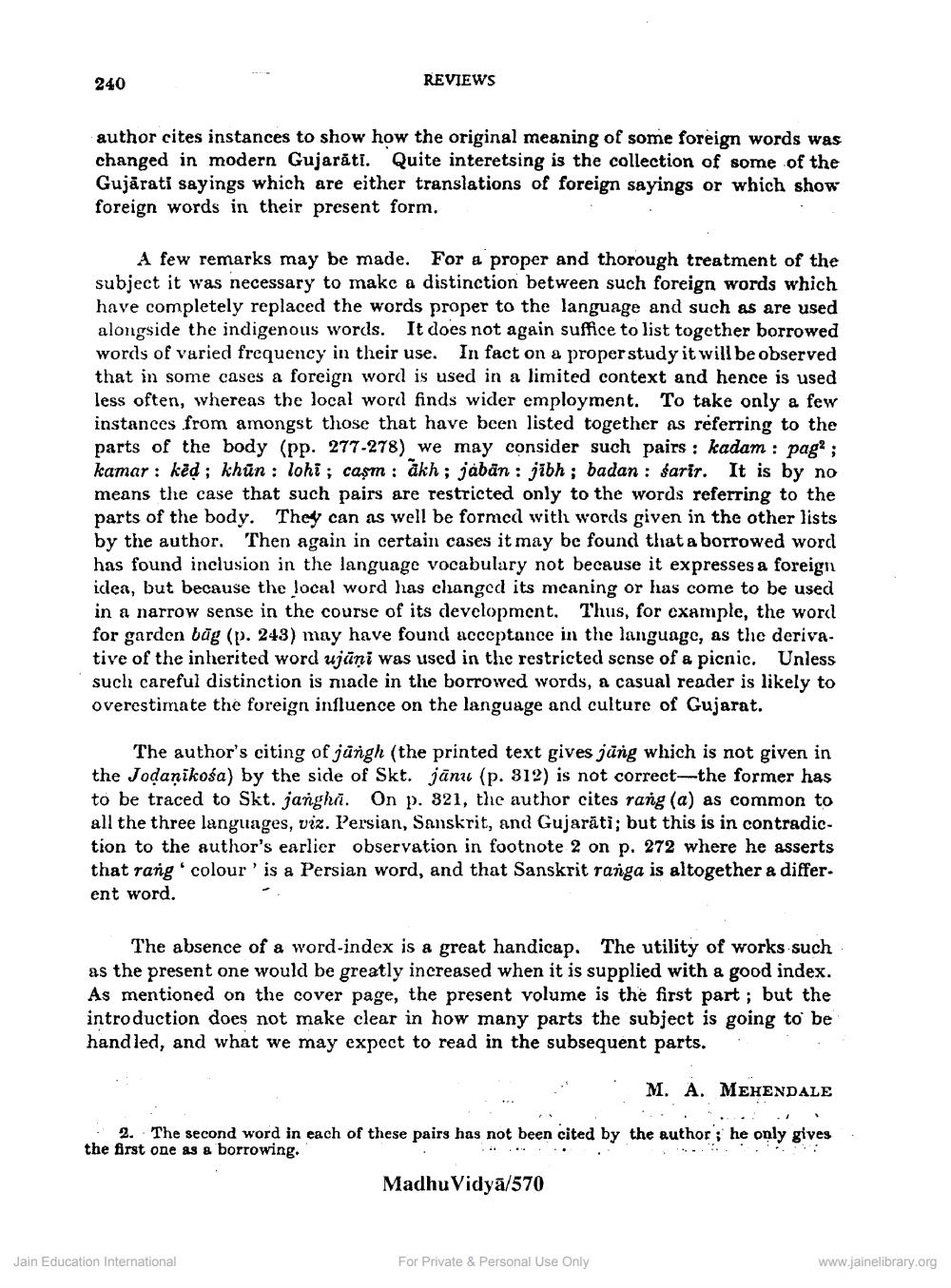________________
240
REVIEWS
author cites instances to show how the original meaning of some foreign words was changed in modern Gujarăti. Quite interetsing is the collection of some of the Gujarati sayings which are either translations of foreign sayings or which show foreign words in their present form.
A few remarks may be made. For a proper and thorough treatment of the subject it was necessary to make a distinction between such foreign words which have completely replaced the words proper to the language and such as are used alongside the indigenous words. It does not again suffice to list together borrowed words of varied frequency in their use. In fact on a proper study it will be observed that in some cases a foreign word is used in a limited context and hence is used less often, whereas the local word finds wider employment. To take only a few instances from amongst those that have been listed together as referring to the parts of the body (pp. 277-278) we may consider such pairs : kadam : pag? ; kamar : ked; khūn : lohi ; casm : akh; jaban : jibh; badan : sarir. It is by no means the case that such pairs are restricted only to the words referring to the parts of the body. They can as well be formed with words given in the other lists by the author. Then again in certain cases it may be found that a borrowed word has found inclusion in the language vocabulary not because it expresses a foreign idea, but because the local word has changed its meaning or has come to be used in a narrow sense in the course of its development. Thus, for example, the word for garden bag (p. 243) may have found acceptance in the language, as thic derivative of the inherited word ujāņi was used in the restricted sense of a picnic. Unless such careful distinction is made in the borrowed words, a casual reader is likely to overestimate the foreign influence on the language and culture of Gujarat.
The author's citing of jüngh (the printed text gives jüng which is not given in the Jodanikośa) by the side of Skt. jānu (p. 312) is not correct the former has to be traced to Skt. jangha. On p. 321, the author cites rang (a) as common to all the three languages, viz. Persian, Sanskrit, and Gujarăti; but this is in contradiction to the author's earlier observation in footnote 2 on p. 272 where he asserts that rang colour' is a Persian word, and that Sanskrit ranga is altogether a differ. ent word.
The absence of a word-index is a great handicap. The utility of works such as the present one would be greatly increased when it is supplied with a good index. As mentioned on the cover page, the present volume is the first part ; but the introduction does not make clear in how many parts the subject is going to be handled, and what we may expect to read in the subsequent parts.
M. A. MEHENDALE
2. The second word in each of these pairs has not been cited by the author ; he only gives. the first one as a borrowing.
Madhu Vidyā/570
Jain Education International
For Private & Personal Use Only
www.jainelibrary.org




